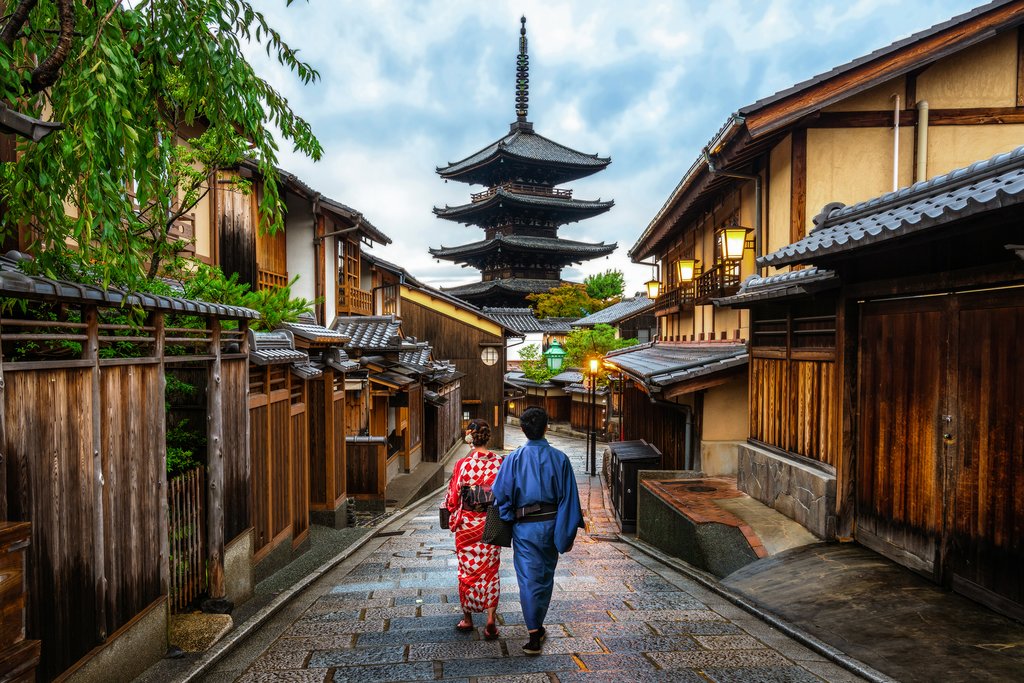
Best of Tokyo & Kyoto - 7 Days

Highlights
- Experience Tokyo's cozy eateries and bars in the Golden Gai district
- Design your own private guided tour of Japan's buzzing capital
- Wander through Kyoto's ancient streets and shrines on your own and with a guide
- Train to Nara for significant temples and artwork dating to the 8th century
- Get a glimpse of Mt. Fuji as you travel between the two destinations
Brief Itinerary
| Day | Highlights | Overnight |
|---|---|---|
| Day 1 | Arrive in Tokyo - Train to Tokyo Station | Tokyo |
| Day 2 | Explore Tokyo with a Local | Tokyo |
| Day 3 | Transfer to Kyoto | Kyoto |
| Day 4 | Explore Kyoto with a Local | Kyoto |
| Day 5 | Day-Trip to Nara | Kyoto |
| Day 6 | Transfer to Tokyo | Tokyo |
| Day 7 | Train to Narita Airport - Depart Tokyo |
Detailed Itinerary
Day 1: Arrive in Tokyo - Train to Tokyo Station

Welcome to Japan! Upon landing at Tokyo's Narita Airport, you'll be greeted by an official airport pick-up who will help you transfer to your hotel via public transportation. Breathe easy: Your guide will validate your rail pass, assist with seat reservations, and answer any of your questions you may have. He/she will also hand over a helpful pocket WiFi device that you can use during your trip.
The train from Narita Airport to Tokyo Station takes approximately 65 minutes. Once you've checked into your hotel and had time to rest, you're free to enjoy dinner anywhere you'd like. This can be an overwhelming decision given the capital's colossal size, so make sure to ask your airport pick-up to provide a few recommendations before parting ways.
Day 2: Explore Tokyo with a Local

Today, after breakfast at your hotel, a local guide will meet you for an exciting tour of one of the world's biggest cities. Since this is a private tour, you can work together to create a customized itinerary that will include the sites that interest you most for a tailor-made experience (he/she can also make suggestions based on your preferences).
Some areas of the megalopolis you might enjoy exploring are Shinjuku (pictured above), Harajuku, and Asakura to name a few options. Before parting ways in the afternoon, your guide can make suggestions for things to do later in the evening and later in the trip.
Day 3: Transfer to Kyoto

This morning, after breakfast in Tokyo, you'll depart the capital and make your way to Kyoto—home of Japan's ancient imperial capital.
Back in its hey-day, Kyoto is where the traditional Japanese ‘high arts’ flourished in the form of tea ceremonies, calligraphy, poetry, philosophy, and religion. Numerous temples and shrines are located throughout the city so, upon arrival, take a self-guided walk along the city's canals where you can explore charming streets and traditional wooden houses for a glimpse of how this ancient imperial culture flourished.
For those looking to shop for souvenirs, Kyoto is also famous for its crafts including unique textiles, kimonos, and pottery.
Chat with a local specialist who can help organize your trip.
Day 4: Explore Kyoto with a Local

Today, a private local guide will meet you in the lobby of your hotel to show you the best of Kyoto.
This is your chance to see some of Japan's most beautiful and historic temples and shrines in Kyoto. Though there isn't time to see and do it all in one day, so you'll likely want to focus on the district of Higashiyama—one of the eleven wards in the city—to see the UNESCO-listed Kiyomizudera (pictured above). You can also experience Gion to observe colorful geisha girls wearing kimonos as they walk to their next appointment, or alternatively, head north to Kinkakuji—a Zen temple in northern Kyoto whose top two floors are completely covered in gold leaf.
Like in Tokyo, your private guide will work with you to create a customized itinerary so you'll get to experience the sights you are most interested in visiting.
Day 5: Day-Trip to Nara

This morning, you'll embark on a self-guided adventure to Nara surrounded by scenic mountains in the countryside. The train from Kyoto Station to Nara Station takes about 45 minutes each way, and there are plenty of options for lunch.
Located near Kyoto, Nara was the imperial capital from 710 until 784 before it was moved to Heijo-kyo (now called Kyoto). During this extraordinary period of history, a large number of Buddhist shrines and temples were erected under the protection of the imperial family and their fellow aristocrats. However, the resident monks in the surrounding hills started to gain too much influence and eventually tried to seize power from the Shinto emperor. Hence, the decision to move the capital to Kyoto.
Many of the temples built at the height of Nara's power, like Todaiji and Horyuji, are currently registered as UNESCO World Heritage Sites. Nara draws Japanese and foreign tourists to see these Buddhist wonders, as well as free-roaming deer mingling in Nara Park.
Day 6: Transfer to Tokyo

Today, at the designated time, you will depart Kyoto and ride a bullet train past Mt. Fuji (keep your camera close!) returning to Tokyo for your last night of the trip. This is a great opportunity to make a reservation for a special dinner at one of Tokyo's famous restaurants. Alternatively, if you are feeling energized, consider tackling Shibuya Crosswalk, a popular area of the city teeming with restaurants, nightlife, and lots of locals.
Day 7: Depart Tokyo

It's time to say goodbye to Japan! Depending on the time of your departure, you will take a train to Narita Airport to fly home carrying memories that will last a lifetime. Otsukaresama desu!
